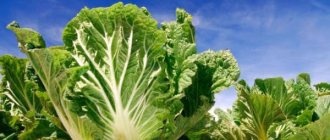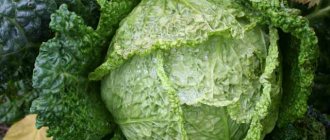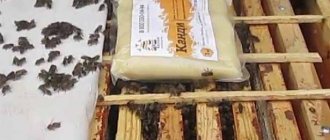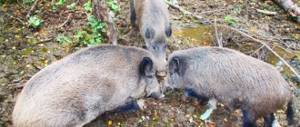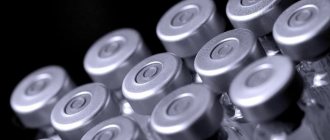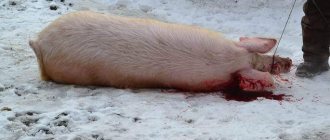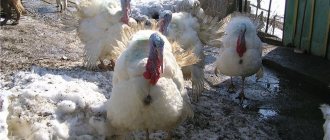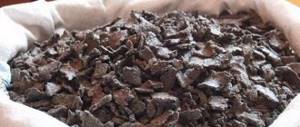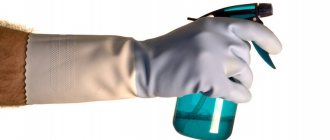Cabbage of any kind is a vegetable that is as popular as it is demanding to care for. Therefore, many summer residents and gardeners clutch their heads: sometimes the heads of cabbage are small, sometimes cracked, sometimes bitter. And this is after constant care. To enjoy this vegetable on your table, in addition to the usual care and spraying, you need to take into account one more important aspect - feeding cabbage in open ground.
Ready-made fertilizers for cabbage
Both individual substances and complex formulations are used. There are a great many of them, for example:
- slaked lime;
- chalk;
- urea;
- ammonium nitrate;
- diammophos (ammonium hydrogen phosphate);
- ammonium molybdate;
- potassium sulfate or humate;
- potassium chloride;
- bone flour;
- superphosphate;
- nitrophoska;
- foscamide;
- colloidal sulfur.
Store-bought fertilizers for cabbage are ideal for gardening beginners: the composition is tested and balanced, instructions for use are included. And for experienced “agronomists” it is simply more convenient to dilute a strictly measured amount of granules in water than to collect shells, infuse droppings or boil ash.
Important! At each stage of development, cabbage’s need for the constituent elements of its “diet” changes. If you apply fertilizer at random and without the correct dosage, you can get sad consequences: a bitter taste, an unformed head of cabbage, and even the death of the plants.
Eggshells for feeding cabbage
Enriches the soil not only with calcium, but also with other microelements, such as potassium, magnesium, phosphorus, sulfur, iron. Also helps reduce soil acidity. When planting cabbage in a hole, add a handful of crushed eggshells, which will be a source of nutrients throughout the season.
Tips for the garden, vegetable garden and flower garden
How to plant strawberries with seeds at home
How to plant raspberries so they don’t spread around the area
Raspberry feeding for a large harvest
Folk remedies used to feed crops
The ingenuity of our summer residents and gardeners knows no bounds. Therefore, there are the most incredible recipes for feeding.
Manure (mullein)
It takes an honorable first place among “folk” fertilizers and is quite loved by professional agronomists.
Mullein contains almost all the cabbage “food”. Slightly rotted or completely decomposed cow manure (humus) is used.
Attention! Under no circumstances throw fresh manure in pieces to the roots. You may harm the plants.
You can feed the cabbage with mullein after planting and for the second or third time, preferably in the form of an aqueous solution that has been infused for a week (the proportion of manure and water is 1 to 10).
Chicken droppings
This natural fertilizer is a true nitrogen concentrate. There is several times more nitrogen in bird droppings than in mullein. But this is why it is dangerous; it needs to be bred more strongly. But it will have a beneficial effect in several directions at once: ripening, productivity, resistance to infections, including those caused by soil. Fertilizer has a long-lasting effect and provides the plants with complete nutrition.
To use chicken manure, dilute it with water in a sealed barrel 1:1 and keep it covered for three days. You can use it all season long by diluting 1 liter of concentrate in a bucket of water for irrigation.
Potassium permangantsovka
Potassium permanganate is a well-known disinfectant for plants and animals. But not everyone knows that this is also an excellent fertilizer for cabbage.
At the stage of leaf development and head setting, it accelerates ripening, improves metabolism in plants, and makes them tastier. It’s easy to pamper cabbage - 3 grams of powder per 10 liters of water.
Important! Follow the feeding rules and dosage to avoid burns. Water exclusively at the roots, in calm weather in the morning or evening.
Hydrogen peroxide
Peroxide for cabbage is very useful; it has the properties of melt water. Therefore, it is applied to the soil, sprayed, and the seeds are soaked before planting. The product will protect plants from bacteria and accelerate growth. Proportion – 2 spoons per liter.
Important! Peroxide acidifies the soil. If your soil is already slightly acidic, use alkaline antiseptic fertilizers.
Ash
Ash is an almost universal fertilizer for cabbage, because it alkalizes the soil, which is often necessary for this crop, contains many microelements and, in addition, repels pests. A mixture of ash and tobacco dust is sprinkled on the leaves, and the soil is “powdered” with the ash ground into dust - a glass per square meter is enough.
To feed cabbage, the ash can simply be diluted, infused, or even boiled in different proportions. For the solution - a glass for a 10-liter bucket of water.
Eggshell
Eggshells alkalize the soil, the calcium contained in it stimulates the active growth of roots and the entire plant, and mole crickets do not like eggshell powder. One drawback is that it takes a long time to assemble.
It is good to add the ground shells after transferring the seedlings into the soil, into the loosened holes. If white spots have formed on the leaves and pests and diseases have nothing to do with it, this is evidence of a lack of calcium and a reason to use the shell.
Other ways
Various folk recipes for feeding mixtures also include:
- brewer's yeast (only with ash or eggshells);
- baking soda;
- banana peel;
- potato peelings;
- boric acid;
- ammonia;
- infusion of weeds (including young nettle leaves).
You can come across, but less often, iodine, salt, toothpaste, vinegar and even small fish - they are placed in the holes in advance to saturate the soil with phosphorus.
How to fertilize cabbage after planting in the ground
All fertilizers contain three main elements needed by plants: nitrogen, potassium and phosphorus. A deficiency or excess of just one element will not allow you to get a good harvest. There are also microelements that help the plant better absorb the main elements.
Nitrogen is responsible for the growth of greenery and root systems. It is necessary for cabbage at an early stage of development, when foliage is growing. A lack of nitrogen leads to weak growth and a lag in the development of the plant; with an excess, the cabbage “gets fat” and forms many leaves that do not curl into a head of cabbage. The following fertilizers contain nitrogen: bird droppings, manure, compost, carbamide (urea).
Potassium promotes the accumulation of glucose and fructose in cabbage roots, enhances the flow rate of cell sap, improving the nutritional supply of the entire plant. The element is necessary for cabbage in the second half of the growing season. The substance is contained in wood ash and potassium sulfate.
Phosphorus is necessary for the plant for proper metabolism (photosynthesis, cellular energy metabolism), increasing the head of cabbage and improving shelf life during storage. Wood ash and superphosphate contain a large amount of phosphorus.
Among the microelements, cabbage needs iron, sulfur, iodine, manganese, zinc, boron and molybdenum. Cauliflower is especially sensitive to micronutrient deficiencies.
Folk remedies
Gardeners who are adherents of organic farming use infusions of herbs and bread, ash and eggshells, iodine tincture, boric acid and ordinary baking soda. These substances have a general strengthening effect on cabbage and nourish it, without causing negative consequences in case of overdose.
Grain fertilizer
Used during the phase of active vegetable growth and head setting. It perfectly nourishes the plant, enhancing growth and increasing the weight of the head of cabbage. It is given twice, with an interval of 3 weeks.
To prepare the fertilizer, add 1 kg of any crackers to 10 liters of hot water (45-50 degrees) and leave in a warm place to ferment for 5-7 days. To enhance fermentation, add 0.5 cups of sugar or a glass of old jam to the bucket of infusion. The finished infusion is filtered and watered at the root of the cabbage, using 1 glass of nutrient liquid per bush.
Instead of breadcrumbs, you can use regular baker's yeast. 20 g of dry yeast granules and 100 g of granulated sugar are dissolved in 10 liters of warm water. Leave for 2-3 days, with constant stirring. Before use, the finished solution is diluted by half with clean water. Liquid consumption – 250-400 g per 1 plant.
Ammonia and ash - super remedies for cabbage: video
Herbal infusion
Herbal infusion or “vonilovka” (as it is called because of its unpleasant odor) is used to saturate plants with nitrogen and microelements. Fertilizing with this product can be carried out all summer, every 2 weeks, stopping applying fertilizer a month before harvesting.
A 100 liter barrel is filled to the top with chopped green grass. These can be succulent garden weeds (nettle, dandelion, spurge, loach) and meadow grass. The mass is filled with plain water and placed in a warm place to ferment for a week. It is convenient to install the barrel in a greenhouse or in a sunny place. The mass must be stirred periodically.
To reduce the unpleasant odor, many gardeners add Baikal to the liquid. And to enhance the nutritional effect - 1-1.5 kg of dry chicken manure.
Important! At temperatures below +22 degrees, fermentation slows down and more time is required to prepare the fertilizer.
The finished composition is diluted with water (for 1 liter of “vonilovka” you need 8-10 liters of clean water) and water the cabbage at the root, using 1 liter of liquid each.
Eggshell
A source of calcium, a soil loosening agent and a suppressor of excessive soil acidity. Add crushed shells to the hole when planting cabbage, 1 teaspoon at a time.
Ash
Wood and grass ash are a rich natural source of potassium and phosphorus, as well as magnesium, iron, and manganese. The powder is added when planting cabbage, sprinkled on the soil around the plants, or an ash solution is prepared: take 2 cups of ash per 10 liters of warm water. The liquid is infused for 2 days, then poured under the cabbage, 2 cups per plant.
Important! For feeding, you can only take ash from burning deciduous trees and shrubs, hay and straw. Plastic, polyethylene, and printed materials release toxins when burned; they are not used for feeding.
Boric acid
Good foliar feeding of cabbage, especially the cauliflower variety. For 5 liters of water take half a teaspoon of boric acid. Spraying is carried out during the phase of filling heads or forming heads.
Iodine
Similarly with fertilizing with boric acid, spraying is carried out at the time of head formation. For 10 liters of water take 2 ml of alcohol tincture of iodine. In addition to being nutritious, fertilizing has a preventive effect on cabbage - it fights fungal spores.
Ammonia
It has a stimulating effect on cabbage seedlings, enhancing its growth. 50 ml of ammonia is poured into a bucket of water and watered at the root of the cabbage, using 2 cups of solution for each bush.
Some gardeners who love exotic fruits successfully use banana peels to fertilize vegetables. As you know, banana is rich in potassium; its fleshy peel is a rich source of this element for the plant. Banana skins are crushed and embedded in the soil on a cabbage bed, and an infusion is prepared: 10 banana skins are poured into a bucket of water and infused in a dark place for 3-4 days. There is no need to dilute the infusion to water the cabbage.
Mineral fertilizers
Amateur gardeners use the following mineral fertilizers on their plots:
- containing nitrogen (urea or urea, ammonium sulfate);
- potassium (potassium sulfate, potassium chloride);
- phosphorus - superphosphate.
In garden stores you can purchase complex formulations containing a set of all three elements: potassium, phosphorus and nitrogen. These are nitrophoska and azofoska, ammonium nitrate. Special compositions have also been developed for feeding cabbage, where all the elements are in the ratio that cabbage needs.
A gardener just needs to dilute the drug in water according to the instructions and water the plants. The following fertilizers are especially popular: OMU, Fasco, Agricola.
Organic fertilizers
It is in organic matter - animal droppings and manure and compost - that nitrogen is contained in the most accessible form for plants. Cabbage is fed:
- chicken manure, preparing an infusion of 1 kg of fertilizer per 10 liters of water, diluting the infusion 10 times before use;
- cow manure, diluting it with water only 5 times;
- compost from plant residues is added to the soil during planting, 0.5 kg per hole.
It is important not to exceed doses of organic matter when growing cabbage, so as not to provoke vigorous growth of foliage, to the detriment of the formation of heads of cabbage.
When and what to feed cabbage in open ground
The amount of fertilizing is determined by the ripening period. For early varieties – 2 treatments, for middle and late ripening – 3–4. Preventive spraying and powdering with various means are not taken into account.
First feeding
It can be done either at the stage of digging holes for seedlings, or 15–20 days after planting. During this period, it is especially important to apply nitrogen fertilizers and refrain from potassium fertilizers - the latter can cause premature head setting. It is recommended to pour, for example, a mixture of 2 handfuls of humus and 1–2 tablespoons of wood ash into the hole.
If the soil was not “dressed” during planting, then the roots that have already taken root can be fed with mullein infusion (0.5 l) or urea (30 g), diluted in a 10-liter bucket. The indicated compositions are poured approximately 0.5 liters per well. There are actually dozens of recipes; you just need to choose the most convenient, accessible and effective for each gardener.
Second feeding
Time: 10–15 days after the initial “refueling”. The norm per plant is approximately 1 liter of either bird droppings infusion (in a ratio of 1:15), or mullein infusion (1:10), or nitrophoska (2 spoons per 10 liters).
Third feeding
After another 10 days, the cabbage is watered, using 6-8 liters per “square”, but only medium and late varieties! Take mullein infusion and superphosphate (30 g) or superphosphate (2 spoons) and 15 g of any ready-made complex with microelements - per 10-liter bucket.
Fourth feeding
20 days before harvesting, late varieties of cabbage need to be prepared for storage. The last, 4th feeding will help with this. For it, you can take potassium sulfate (40 g) or ash infusion (0.5 l) into a 10-liter bucket.
What fertilizers are needed?
During seedling germination, growth activators are required. After planting seedlings in open ground, they take into account not only what cabbage likes, but also the necessary microelements for most nearby crops.
Plus, the growing season is taken into account. At the initial stage, nitrogen-containing complexes will be required. Next, they are selected according to the need for growth/development.
Cabbage is an unpretentious, prolific vegetable. It contains a lot of fiber and other equally useful micro- and macroelements. In order for the head of cabbage/cabbage leaves to truly bring maximum benefit to the human body, alternate folk remedies and purchased mineral complexes.
Nitrogen
During the first stages of development of cabbage seedlings, nitrogen is required. Lack of an element during growth can also manifest itself. The same applies to other microelements, which are replenished with the help of complex fertilizer mixtures and monopreparations.
Nitrogen-containing fertilizers are:
- Ammonium nitrate or ammonium nitrate. The concentration of the main substance is 35 (less often 30)%. When feeding, strictly follow the manufacturer’s instructions.
- Urea or carbonic acid (also called ammonium salt). It is recommended to use this particular substance as a fertilizer for cabbage.
- If it is necessary to replenish the soil with sulfur + nitrogen, it is better to opt for ammonium sulfate. The main component contains at least 20%. Use as needed (increasing soil acidity). Not suitable for all varieties.
Potash
Potassium will be required during active growth/development. The element serves as a strengthener of the root system and leaf plate. With its help, the heads of cabbage become elastic and strong.
Increases in size. Potassium fertilizers include:
- Potassium sulfate or potassium sulfate. The content of the main component reaches 45%. Does not contain chlorine, which is good for certain types of cabbage.
- The second drug is not as useful, but is effective for strengthening the roots - potassium chloride. The composition contains chlorine, which can negatively affect the taste of the vegetable. The negative point is soil acidification. Potassium contains more than 50-55%.
Phosphorus
For the proper formation of fruit parts, one should not forget about phosphorus. Application is expected in the last period of the growing season.
It has more benefits on late-ripening and mid-ripening varieties. Since phosphorus is poorly washed out of the soil, and in an acidic environment it is not absorbed by the plant at all, it is better to use complex preparations.
For intensive effects, superphosphate is suggested. Single and double are available for sale. Therefore, before applying, you should make sure that the product is chosen correctly.
Organic
People's reserves of fertilizer mixtures are suitable for all crops (garden, vegetables). The most common (green manure, manure, chicken droppings) are universal fertilizers for the garden.
Herbal infusion
The simplest, yet cheapest means of feeding. Suitable for 95% of crops and all cabbage varieties. For preparation, you need to collect weeds without seeds daily in a separate container or pile.
The prepared gruel is further diluted with water. Method of application: root feeding. The result will be improved color and elasticity of the leaves/head of cabbage.
General feeding rules
The ideal time for the procedure is evening, or at least early morning. The soil should be moist. If the weather is dry, abundant watering is needed before fertilizing. Preliminary weeding and loosening are also required.
Use fertilizers only at recommended dosages. Do not fertilize one crop according to the norms calculated for another - plants' needs may vary even within the same crop. To prepare the compositions, use warm water - this is necessary to prevent fungal and other diseases.
After adding the “dressing”, it is useful to hill up the cabbage or mulch the soil. This will extend the life of the fertilizer. If mulch is already in place, remove it before fertilizing. You should not plan pest control and fertilizing for one day; it is better to apply fertilizer 1-2 days after baiting.
Important! Try not to mix potassium and nitrogen fertilizers - heads of cabbage may not form.
Ash for feeding cabbage
Wood ash is a good potassium and phosphorus fertilizer for acidic and neutral soils. In addition to potassium and phosphorus, which are in the ash in a form easily accessible to cabbage, the ash contains calcium, magnesium, iron, sulfur and zinc, as well as many trace elements necessary for vegetables.
Wood ash is also used for dusting and spraying plants against pests and diseases. Dust the plants with ash early in the morning, following the dew, or after spraying them with clean water. The solution for processing cabbage is prepared as follows. Pour boiling water over 300 g of sifted ash and boil for 20-30 minutes. The broth is settled, filtered, diluted with water to 10 liters and 40-50 g of soap are added. Cabbage is sprayed in the evening in dry weather. To repel slugs and snails, sprinkle dry ash near the stems and around the cabbage.
How to fertilize seedlings if they are not growing well
If seedlings do not develop well in a greenhouse or on a windowsill at home, in addition to poor soil, they may be hampered by poor or excessive watering, lack of light, or dense sowing.
To give it more nutrition, you need to pamper the roots three times: on the 10th day after picking, 10–12 days after and then shortly before transplanting, add potassium chloride, ammonium nitrate and superphosphate in the following proportions:
- 1 g, 2.5 g and 4 g per 1 l;
- only 3–4 g of saltpeter;
- 2, 3 and 8 g per 1 liter, respectively.
What care does cabbage need besides feeding?
It is enough to follow simple rules:
- Watering. It should be moderate to prevent overflow and drying out. It is best to use distilled water. Watering should be done in the evening. The interval between procedures is usually 5 days, and in hot weather - 2-3 days.
- Loosening the soil. It is necessary that the roots have access to oxygen. It is best to carry out the procedure the next day after watering.
- Mulching. Experts advise making a layer of mulch 5 cm thick. This will prevent rapid evaporation of moisture and the appearance of weeds. Mulch also provides nutrients to young plants. Peat or humus is usually used for covering.
What to fertilize cabbage with: urea, potassium chloride, superphosphate or folk remedies, each gardener decides independently, but a lack of nutrients can significantly reduce the yield. Experienced gardeners in their plots, in addition to white cabbage, often cultivate other varieties. When choosing a specific one, you should determine exactly why it is grown and the required number of heads. 3 weeks before harvesting, watering should be stopped completely. Then more fiber will accumulate, thanks to which the cabbage will be better preserved in the future. It is recommended to harvest when the temperature outside at night reaches +20 degrees. Heads of cabbage should be stored in a cool room, laid horizontally.
0
Soil acidity standards for crop development
For cabbage, soil acidity is very important - the soil should be neutral or slightly acidic (pH 7-7.5). You can measure the indicator with a pH meter or litmus paper (available in stores for gardeners, gardeners and summer residents).
A simple folk remedy is to study the weeds that are especially rampant in your area. Horsetail, plantain, violet, knotweed, and buttercup like acidic soil. Neutral and slightly acidic - wheatgrass, chamomile, thistle, nettle, quinoa, bindweed, coltsfoot, clover, sweet clover.
What to put in the hole when planting cabbage?
Planting a vegetable in open ground and a greenhouse is not an easy task. When planting a vegetable in a hole, you need to add:
- Compost or fertile substrate (for soil in a greenhouse). They will help the cabbage take root in a new place, and also contribute to prolonged access of nutrients to the already grown plant.
- Lime or chalk. They will help the plant protect itself from dangerous diseases that often plague this crop.
CAREFULLY! When planting cabbage in open ground or a greenhouse, do not put mineral fertilizers and manure in the planting hole. This is due to the fact that they can burn parts of young plants and harm them. It is better to use these fertilizers later, when the vegetable has grown.
How to properly feed red and cauliflower
Red cabbage can be fertilized three times, focusing on the nitrogen component. The best time is when the heads are tying.
For the first time, it is advisable to wait for the forecast for early rain, approximately in the third week after planting, and feed the sprouts with nitrogen fertilizers with 10 g of urea. In dry weather, use a solution of mullein or urea. The next feeding should be done before the rows close, and the third 14–20 days before harvesting.
Cauliflower is quite capricious, and if something goes wrong, it simply won’t bloom or set heads. To feed this crop, you need generally the same and in the same quantity as for its white cabbage sister. Additionally, boron and molybdenum are useful for the appearance of inflorescences and to prevent cracking.
When the heads are deformed, they are sprayed with a mixture of ammonium molybdic acid and boric acid - 10 g per 10-liter bucket. It is important to treat the species frequently for insects. To do this, it is not necessary to take pesticides; use infusions of burdock, celandine, garlic or wormwood for spraying.
Take the time to properly and timely feed cabbage, and your harvest will only be enviable.
First June feeding
In June, when the seedlings have already taken root in the new place, you can feed the cabbage. At this time, it is actively growing green mass and accordingly needs nitrogen. Therefore, it would be preferable to prepare a solution rich in nitrogen. We use one of the options (the calculation is based on a bucket of water):
- Urea (15 g);
- A glass of wood ash mixed with superphosphate (60 g);
- Ammonium nitrate (20 g);
- 0.5 liters of mullein mixed with water (1:10);
- A mixture of equal quantities of 10 g of potassium chloride and urea, and superphosphate (20 g);
- Potassium humate (20 g).
The permissible watering rate for each bush is an average of 1.5 cups of nutrient solution. This is done by first moistening the soil with water.
Types of fertilizers and principles of their use
Farmers suggest using mineral and organic preparations, gardeners are adopting traditional methods of feeding white cabbage.
Mineral
They are classified into groups according to the main active element:
- Nitrogen fertilizers for cabbage are represented by urea, sodium, calcium, ammonium nitrate, and ammonium sulfate. They are fully digestible and are relevant for feeding seedlings and young specimens when adapting to open ground.
- Phosphorus - phosphate rock, double and single superphosphate. Necessary for the development of culture during head setting. A characteristic feature of fertilizing for cauliflower is the impossibility of an excess of this substance.
- The group of potassium chloride and potassium sulfate is usually added together with nitrogen and phosphorus preparations, as it can enhance their beneficial effects.
- Complex substances in the form of nitroammophoska and azofoska are saturated with potassium, nitrogen and phosphorus; they are in demand among inexperienced gardeners and in areas with poor soil composition.
Nitrogen fertilizers for feeding cabbage
Mineral fertilizers for cabbage are sold in high concentrations; it is important to be careful when creating working solutions.
Organic
Acidic soil can be preliminarily neutralized with wood ash by scattering it under digging in the fall; it is also rich in potassium. If it was not possible to prepare the site since last season, it is worth taking this measure 2-3 weeks before planting the seedlings in the ground.
Bird droppings, mullein, and herbal infusions serve as effective feeding for cabbage in open ground. A vegetable that quickly gains weight depletes the soil, so it is important to alternate organic and mineral applications.
Mullein can be used as a solution or in rotted form. Humus is laid at the stage of preparing beds for crops. Root feeding of cauliflower is done with a liquid product: fresh manure is dissolved in water in a ratio of 1:10, after infusing for a day, 500 ml is poured under each root. Chicken manure is aggressive, so to avoid burns on the plant, it is diluted in water in a ratio of 1:20.
Feeding cabbage with yeast is very effective: fungi, developing in the soil, saturate it with useful substances, for example, root-forming vitamins and nitrogen. A live or dry product can be used to make a yeast mixture. In the second case, dissolve 2 tbsp in 10 liters of warm water. l sugar and 10 g granules, leave for 2 hours. To organize watering of a vegetable at the root, each liter of the resulting infusion is combined with 5 liters of water.
Yeast - an organic means for feeding cabbage
Feeding cabbage with fresh yeast is also accompanied by the preparation of a solution: half a kilo of the product is diluted in 5 liters of water, after infusion it is diluted in a ratio of 1:10.
Folk
The table shows popular homemade recipes for making fertilizers for cabbage:
| Key Ingredient | Beneficial effect | Instructions for use |
| Baking soda | Prevents the heads from cracking during growth and during storage of the vegetable. | 20 g of the substance are diluted in 10 liters of water, after complete dissolution, the solution is poured over the leaves (this is a foliar application). |
| Ammonia | The gentle form of the nitrogen source helps to repel pests and increase biomass. | Dissolve 3 tbsp in 10 liters. spoons. |
| Banana peel | Serves as a source of potassium. | It is used as an infusion from dried preparations or fresh waste (the skins are placed directly into the holes). The infusion is prepared at the rate of 1 liter for each peel; after infusion for a day, the liquid is filtered and poured under the roots. |
| Boric acid | It has a beneficial effect on oxygen metabolism and leads to an increase in the concentration of chlorophyll in the foliage. Foliar treatment serves as a prevention of fungal diseases. | 1 tsp. The substances are stirred in a glass of boiling water, then the solution is diluted in 10 liters of water. |
| Nettle infusion | It is as effective as feeding cabbage with urea or mullein. | A bucket, half-packed with shoots, is filled with warm water and placed in a warm place for 4 days. Before use, the infusion is filtered and diluted 1:10. |
| Eggshell | Helps increase the content of calcium, potassium, phosphorus, iron, magnesium, sulfur in the soil, and helps neutralize soil acidity. | When planting, a handful of crushed waste is added at the root - they will gradually release nutrients throughout the growing season. |
| Potato peelings | They enhance soil fertility and provide natural loosening. | A handful of waste is placed in the hole when planting the vegetable in the ground. But such fertilizer can become a bait for potato pests. |
